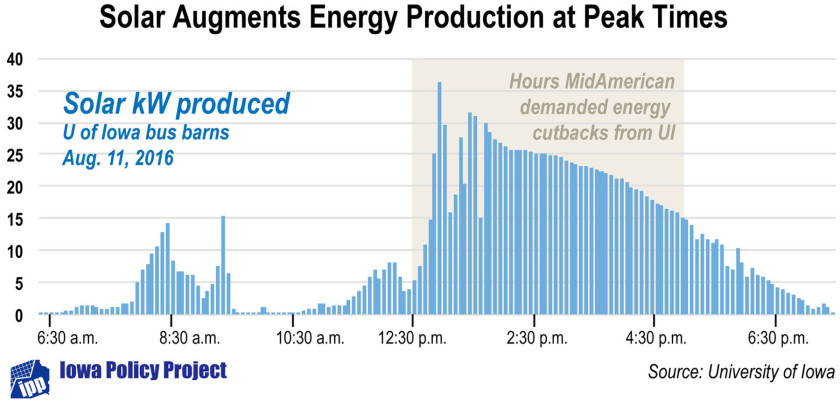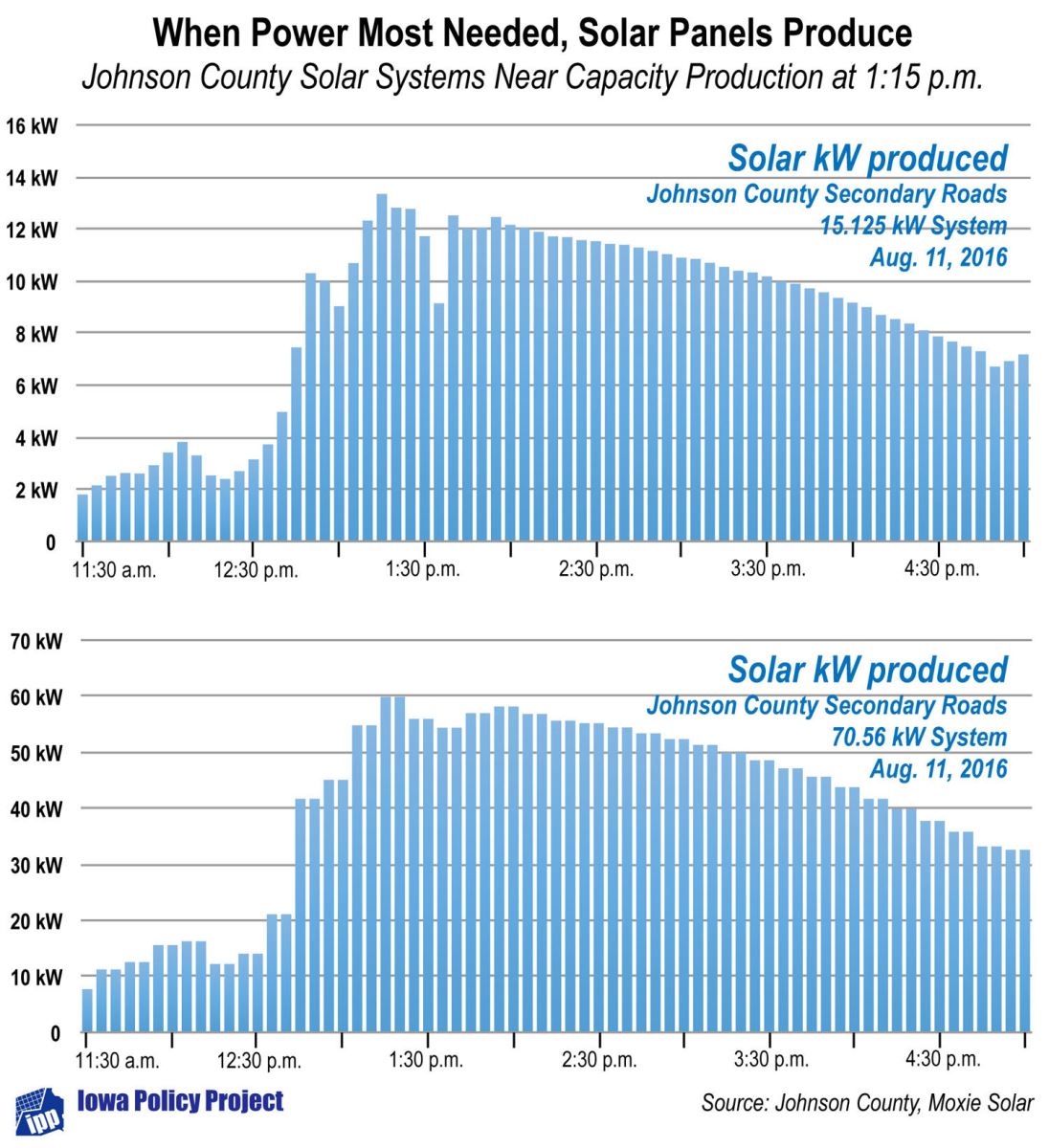Solar power shines when most needed
posted
on Tuesday, September 6, 2016
The hot sun we experienced this August not only caused the local electric grid to experience high use, but it also powered solar systems distributed around Eastern Iowa.
.jpg)
The middle of a hot summer day is a time when almost any U.S. electric utility expects to see highest demands during the year. Aug. 11 was going to be one of those days in Eastern Iowa. Peak demands of high electricity use translate to high costs.
So, a day in advance, MidAmerican Energy asked the University of Iowa’s Facilities Management team to cut back the university’s electric load from 12:30 p.m. to 5 p.m. on Aug. 11, 2016.
The university has an arrangement with the electric utility to decrease its electric load by cutting back on air conditioning and other usage, when called upon, in exchange for a reduced electric rate. The goal is to reduce costs for all utility customers by encouraging some customers to reduce their electricity use at the highest and most expensive times.
This type of arrangement is a win-win not only for UI and MidAmerican, but also other MidAmerican customers. Utilities often make these arrangements available to large customers as well as residential customers with air conditioning.
The university has two small solar energy systems that produce electricity. The data for one of them, a 38-kilowatt solar array, showed energy production varying during the morning of Aug. 11 (below). During the utility’s predicted peak period of energy use, the solar array’s production rose quickly and continued to be strong for the remaining period.
 Similarly, the solar arrays at Johnson County’s Secondary Roads and SEATS campus began producing much higher levels of solar energy shortly after the 12:30 p.m. high-use period started. These panels also continued with strong production through 5 p.m., when the period ended.
Similarly, the solar arrays at Johnson County’s Secondary Roads and SEATS campus began producing much higher levels of solar energy shortly after the 12:30 p.m. high-use period started. These panels also continued with strong production through 5 p.m., when the period ended.

The hot sun caused the MidAmerican system to experience a peak day but also powered distributed solar systems in the area to help meet those higher energy needs.
Distributed solar is good for the environment because the electricity produced is clean. It also is likely to come just when it is needed. Let’s make sure we have the policies in place to encourage more solar.
David Osterberg is an energy and environment researcher at the Iowa Policy Project.
Nathaniel Baer is the energy program director at the Iowa Environmental Council.
A version of this article ran in the Cedar Rapids Gazette on September 6.
- clean energy
- solar power